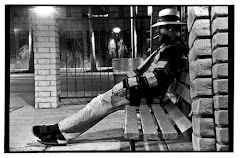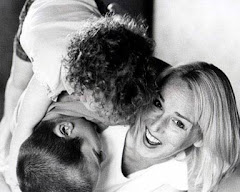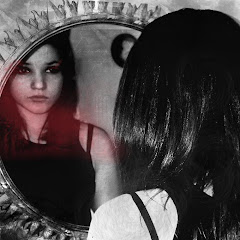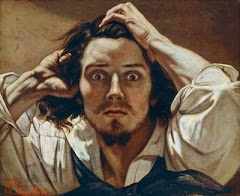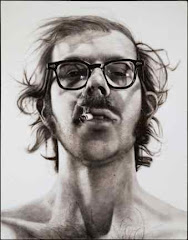Thursday, February 26, 2009
Declaration
I declare my concept to be Self-Perception, or the way people view themselves. I will mainly be focusing on self portraits, however that does not necessarily mean that every piece will have the artist themself in the composition. If the composition is depicting the artist, or telling more about them and their personality then it is a piece that i can use in my concept. I chose Self-Perception because I find it interesting how people view themselves. Some people may view themselves exactly how others view them, however most people see themselves completely different. I will be looking further into the minds of others to determine who the person really is.
Thursday, February 12, 2009
Mind's Eye Critique
Looking into the depths of Todd Kefor’s Still Life painting, the viewer’s eyes instantly take in the complex, contrasting composition. Consisting of a variety of different subject matter, Still Life is done in acrylic paint creating a smooth texture that creates a sense of unity throughout the entire composition. With the content of a composition consisting of skulls, one would think the viewer would feel the piece to be dark and ominous. On the contrary, the chiaroscuro is extravagant, using hues of green with accents of red creating a warm composition. Seeing this painting, the viewer feels a sense curiosity and understanding, and is automatically drawn in, wondering what is in the hope chest, or what is lurking behind each cinder block.
At first, the viewer sees the composition as a whole, and does not place their eyes on an exact focal point. However, when considering the entire piece, one might find their eyes lingering on the monkey, whose bold, red background creates a lot of contrast sending the viewer’s eyes immediately in that direction. Otherwise, the viewer could set their eyes on the human skull, whose highlights are done in a brilliant hue of red creating a strong emphasis. Another object in Still Life which the viewer could be drawn to is the hope chest; curious to what the contents might be and wondering what the deeper meaning is.
Perhaps the importance of this composition is hope. Along with the flowers in the background, the chest may signify hope or happiness. The ominous, dark cinderblocks are set in stone in this piece. They are the building blocks of this composition. On the other hand, perhaps the entire meaning of this composition is life itself. The cinder blocks possibly illustrating the stepping stones of life; solid, stationary. The monkey could be the soul, revealing their inner world to the viewer. The hope chest and flowers possibly representing joys and hopes in life, where as the skulls depict death. As a whole, Kefor’s Still Life captures the viewer, leaving them wanting a more in depth explanation.
At first, the viewer sees the composition as a whole, and does not place their eyes on an exact focal point. However, when considering the entire piece, one might find their eyes lingering on the monkey, whose bold, red background creates a lot of contrast sending the viewer’s eyes immediately in that direction. Otherwise, the viewer could set their eyes on the human skull, whose highlights are done in a brilliant hue of red creating a strong emphasis. Another object in Still Life which the viewer could be drawn to is the hope chest; curious to what the contents might be and wondering what the deeper meaning is.
Perhaps the importance of this composition is hope. Along with the flowers in the background, the chest may signify hope or happiness. The ominous, dark cinderblocks are set in stone in this piece. They are the building blocks of this composition. On the other hand, perhaps the entire meaning of this composition is life itself. The cinder blocks possibly illustrating the stepping stones of life; solid, stationary. The monkey could be the soul, revealing their inner world to the viewer. The hope chest and flowers possibly representing joys and hopes in life, where as the skulls depict death. As a whole, Kefor’s Still Life captures the viewer, leaving them wanting a more in depth explanation.
Paul Gauguin, Self-Portrait with Yellow Christ, Post-Impressionism
 Looking at the venire of Paul Gauguin’s Self Portrait with Yellow Christ, the viewer immediately notices Gauguin with two strange objects behind him. When looking deeper, the viewer then notices Gauguin’s painting Yellow Christ behind his right shoulder, and a deformed gargoyle behind the left. The interesting use of color creates an immense amount of contrast but at the same time the intermingling of the similar hues cause the subject matter to flow. The intensity of his eyes draw the viewer in, noticing first the interesting texture the brush strokes give this entire painting. At that moment, looking deeper into the separation of Yellow Christ and the strange gargoyle, the viewer begins wondering what Gauguin is trying to portray. It is an interesting composition, unconsciously leaving the viewer inquisitive to who Gauguin was as a person and what this painting could be showing.
Looking at the venire of Paul Gauguin’s Self Portrait with Yellow Christ, the viewer immediately notices Gauguin with two strange objects behind him. When looking deeper, the viewer then notices Gauguin’s painting Yellow Christ behind his right shoulder, and a deformed gargoyle behind the left. The interesting use of color creates an immense amount of contrast but at the same time the intermingling of the similar hues cause the subject matter to flow. The intensity of his eyes draw the viewer in, noticing first the interesting texture the brush strokes give this entire painting. At that moment, looking deeper into the separation of Yellow Christ and the strange gargoyle, the viewer begins wondering what Gauguin is trying to portray. It is an interesting composition, unconsciously leaving the viewer inquisitive to who Gauguin was as a person and what this painting could be showing.A focal point is always different to every viewer. Some may say that part of the background of this piece draws their attention first. Maybe Christ and the bold, intense colors he is created with, or the viewer possibly will see Gauguin’s face first. The different values of this composition create a lot of contrast bringing the viewer to set their eyes on specific aspects of this painting. For instance, the purple tones used in Gauguin’s clothing are also placed in the background of Yellow Christ and in the nooks and crannies of the gargoyle’s shape. This, subtly creating a sense of unity, also renders contrast with the hues of orange and yellow strategically placed behind Gauguin’s face. The viewer begins to notice the expression on his face shows no emotion. The emotion and personality of this piece is shown in the objects that surround him. He tells a story in this painting, depicting his personality for all to see.
One might say this composition is Gauguin’s perception of himself. The gargoyle is most likely portraying the evil, ‘Hyde’ side of him, shown every time he lost his temper, and Christ portraying the good, ‘Jekyll’ aspects of him. The self-portrait uses hints to what Gauguin is genuinely saying about himself. The viewers can only speculation to the real meaning of this painting. Only Gauguin himself knows if this presumption is true.
Subscribe to:
Comments (Atom)

